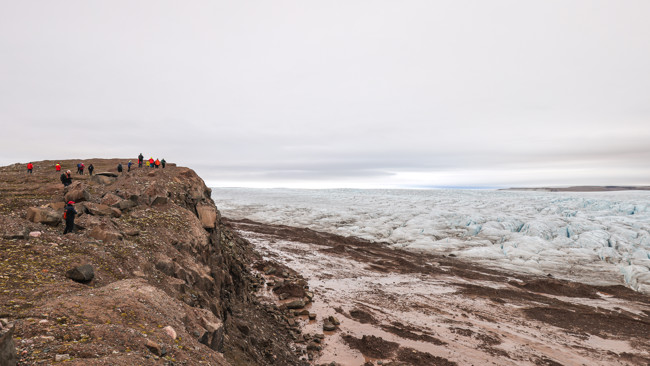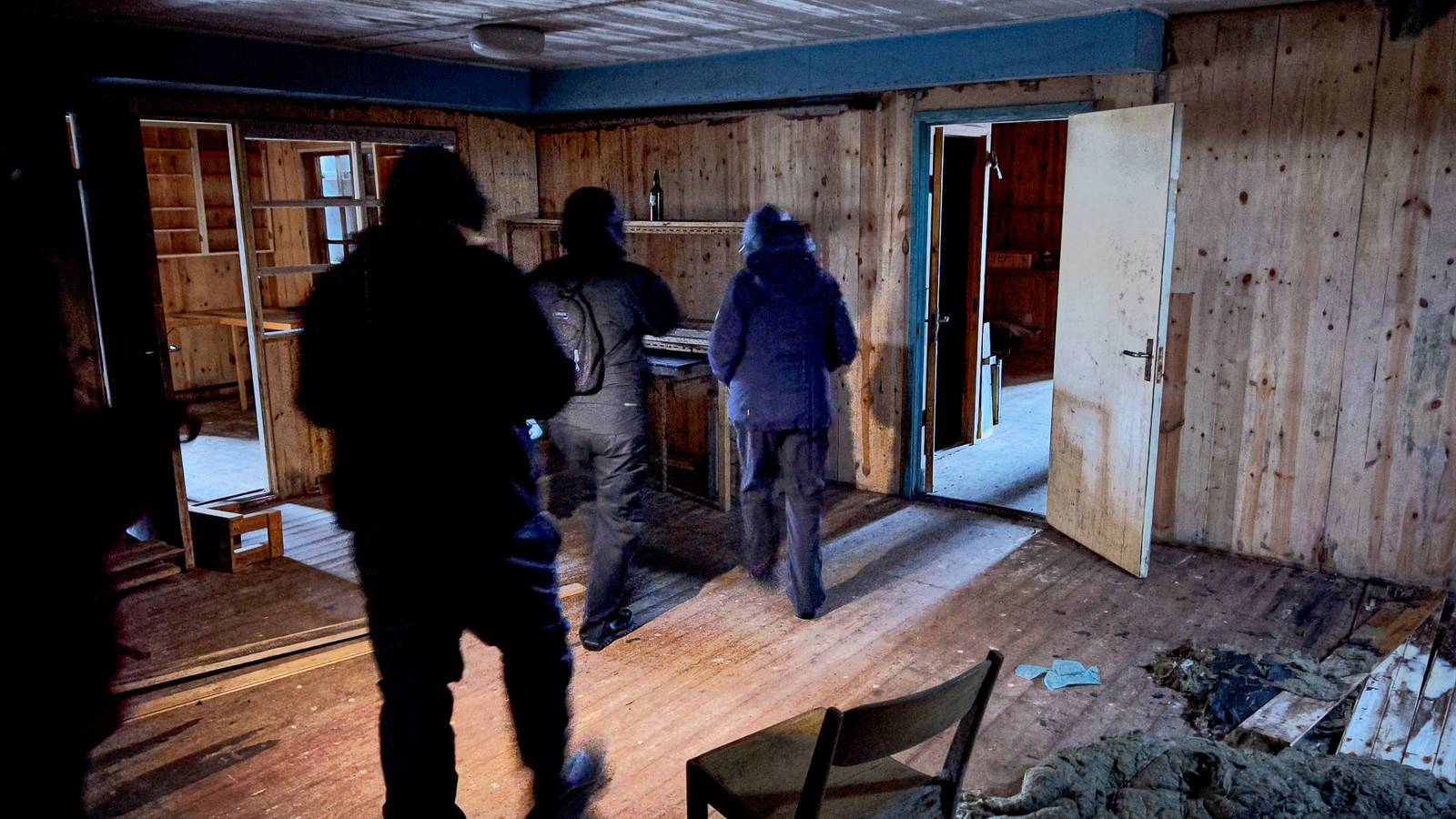A landing took place at a site on the northern side of Murchinsonfjorden: Kinnvika. Kinnvika is a scientific station that was built by Sweden and Finland during the International Geophysical Year of 1957/1958. The buildings are still in good condition. From this location, observations were made in various fields of geophysics, including meteorology, aurora borealis, and geomagnetism. Although the scientific program was successfully completed, the station fell into disuse after that year.
The buildings were also used again by scientists during the International Polar Year of 2007/2008. The research focused on the glaciology of the local ice caps, Vestfonna and Austfonna, as well as local environmental pollution, the effects of climate change on the local ecosystem, and other topics.




For each activity, guests can choose which walk or activity they want to join. The duration or distance of the walk often remains a mystery until it's over, as the group will need to adjust to the pace of the slowest member. This is why there are typically 3 to 4 walking options available on land. The 'long walk,' also known as the 'attack group,' focuses more on the hike itself than on photography. The 'medium hike' group may visit the same places as the long walk but takes more time, allowing for more photography along the way. Lastly, the 'short hike,' often called the 'poetry group,' takes a slower pace, spending time at a hut, exploring plants, or strolling along the beach, with the terrain being relatively easy to walk.
With the group that chose the long walk, we set off across the well-formed elevated beaches and along ridges filled with Svalbard's oldest fossils, including Stromatolites. We continued to the top of Kinnberget, which stands at 128 meters high, offering a stunning view over Murchinsonfjorden and Oddneset. We took our time to rest and soak in the beautiful scenery.




On the way back, we made a small loop and took the time to stop and explore the buildings of Kinnvika. In addition to large barracks with multiple sleeping quarters, we found an observatory for northern lights research and a full workshop with a garage. There was even a sauna (unfortunately closed for viewing)—after all, they are Swedes and Finns! We also came across an old amphibious vehicle, which caught the interest of several men in the group.
Overall, we spent about 3 hours on land, enjoying both the walk and the rich history. It's great to know that this landing site will remain open in the future, allowing more people to experience this unique and historic locational place.


Please note: Depending on the lens used for a photo or video shot an animal may appear to be closer than it is. We always follow strict wildlife guidelines to ensure that we do not cause any disturbance.






